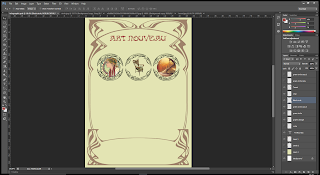Pop design is a phrase that refers to popular culture in
design. The main founders of the style were the Independent Group, starting in
1952 developing in Britain and continued to spread also in America. At the same
time in America, artists such as Andy Warhol, Roy Lichtenstein and Claes
Oldenburg were creating art that was considered as “low art” which their art
consists of commercial adverts, packaging, Television and comics.
Pop design style was always aiming for youth customers. Therefore this style is known to be more fun than the others, which uses lots of bright and vibrant colours. Starting in the 1960s, products at that time were considered to be “use it today, slings it tomorrow”. This means that disposable products were started to be mass-produced. Two design examples of disposable design are; the polka dotted cardboard spotty child chair by Peter Murdoch and the PVC Blow Chair by Lamazzi. Both two products are produced in vibrant colours.
Pop design style was always aiming for youth customers. Therefore this style is known to be more fun than the others, which uses lots of bright and vibrant colours. Starting in the 1960s, products at that time were considered to be “use it today, slings it tomorrow”. This means that disposable products were started to be mass-produced. Two design examples of disposable design are; the polka dotted cardboard spotty child chair by Peter Murdoch and the PVC Blow Chair by Lamazzi. Both two products are produced in vibrant colours.
 |
| Polka-dotted cardboard spotty child chair by Peter Murdoch |
The blow chair is an icon of the pop design. It was one of
the first furniture to be inflatable which was actually mass-produced. It is made
out of transparent PVC. Without air the chair will not have a form and doesn’t
function.
 |
| PVC Blow Chair by Lamazzi |
At that time new materials such as plastics were being explored and experimented to come up with something innovative and fun. Pop design took several inspirations and these are; Art nouveau, Art Deco, Futurism, Surrealism, Op Art, Psychadelia, Eastern Mysticism, Kitsch and Space Age.
The Panton chair was designed by Verner Panton, who was a
well-known architect. In order to come up with such design, Panton spent
several years trying to experiment and research for the best materials and techniques
to use. The materials originally used
are rigid polyurethane foam for the shell and a glossy lacquer for the
finishing. Panton’s aim was to design a chair from one whole piece of material,
but most importantly has to be comfortable to sit on. Actually I think Panton
made a good effort in achieving a splendid design of a chair with just one
piece and managed to make it, self-balancing. In the 1963, he joined with Vitra
and started producing the Panton chair in the 1967. At the time it started to
be produced, it got several awards in which shows the excellence of the chair.
 |
| The Panton Chair |
 |
| The Panton Chair (different colours) |
References:
MoMA, n.d. Blow
Inflatable Armchair [online] Available at: https://www.moma.org/learn/moma_learning/paolo-lomazzi-donato-durbino-jonathan-de-pas-blow-inflatable-armchair-1967
[Accessed 31 May 2016].
Vitra, n.d. Panton
Chair Classic [online] Available at: https://www.vitra.com/en-as/product/panton-chair-classic#t/tab-product
[Accessed 31 May 2016].
Fiell C. and Fiell P., 2015. Design of the 20th Century.
Köln: Taschen.
Hauffe, T., 1998, Design A Concise History. London: Laurence
King Publishing.













































